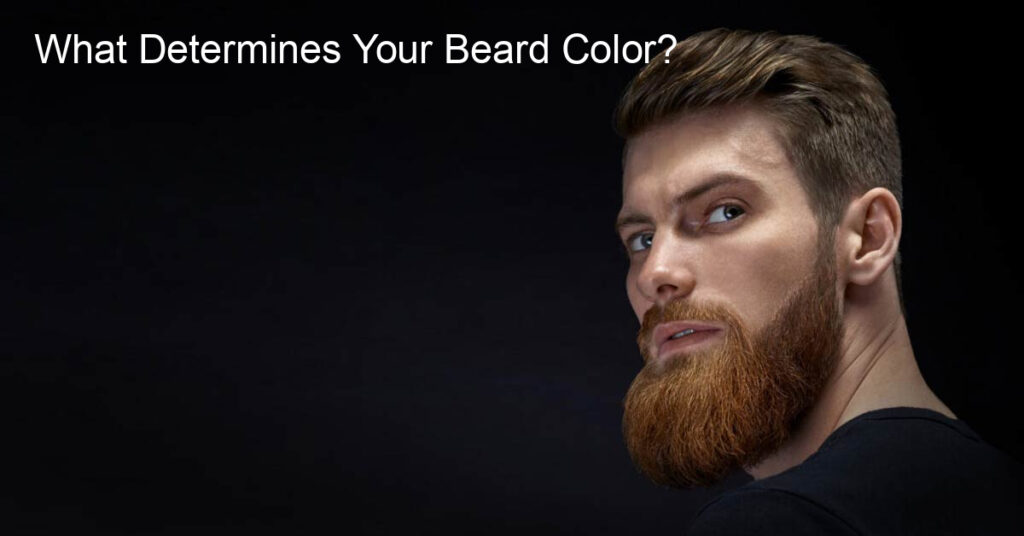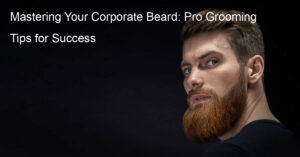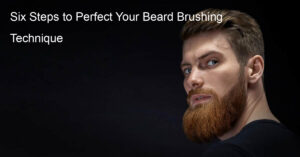We all know that beards come in a variety of colors, from the darkest black to the lightest blond. But have you ever wondered what determines your beard color? Is it genetics? Diet? Something else entirely?
Let’s take a closer look at the science of beard color and find out what factors influence the hue of your facial hair.
Does beard color change with age?
It’s normal to ask whether beard color changes with age. As it turns out, the answer is both yes and no. While your hair may start fading in color as you get older, beards can remain relatively dark. This is because our facial hair doesn’t have melanin (the pigment responsible for giving hair its natural hue) like other parts of our bodies.
So while other people’s hair may become more gray or white as they age, their beard may stay solid black or brown throughout the years. Ultimately, beard color can change a little bit with age, but for many people, it will stay roughly the same unless exposed to the elements in excessive amounts.
Why is my beard red but my hair brown?
Many people are puzzled by the fact that their beard is a different color than their hair. Why is my beard red but my hair brown? It’s all thanks to something called pheomelanin, which is a type of melanin found in human bodies and can produce lighter, reddish colors.
Usually, red beards appear because someone has an abundance of pheomelanin — more so than in other facial hair or head hair. This can sometimes result in an uneven color balance, with the beard appearing more vibrant or redder than the rest of the hair.
Genetics plays a huge role too; if you’ve got some Irish or Scottish background, this could mean that the genes for a red beard have been passed down from generation to generation.
What makes a man’s beard red?
A red beard is a perfect accessory for any man! For some, it’s genetic – they may have inherited their red facial hair from their parents or grandparents. Others may dye their beard to achieve a striking look. Henna is a popular option, as it is natural and creates a beautiful orange-red shade.
Furthermore, differences in sun exposure can cause varying shades of red to appear when looking at a single beard. The color of someone’s beard can also change over time too, adding an interesting level to the mystery of what makes a man’s beard red!
Why do guys’ beards get lighter?
It’s a common phenomenon seen across men of all ages; their beard hair becomes lighter as time passes. There are many theories for why this happens, but the most popular one seems to be genetics. It appears that some people have the genetic makeup that causes their beard hairs to lighten up over time, and others don’t.
We may never know definitively why this happens, but it’s an interesting character we can use to identify patterns among people who share certain sets of genes. Another theory is that gradual exposure to UV rays from the sun gradually lightens dark hair, making it more manageable and easier for a man to maintain his beard.
Regardless of why it occurs, a lighter beard just means your hair is changing up its look!
Can the sun change the beard color?
It is a common misconception that the Sun can dye beard hair, just like it can tan skin. After all, exposure to the Sun can lighten dark-colored hair— so why not beards? The simple answer is that facial hair does not operate in the same way as head hair.
While sun exposure may lighten a few of the darker hairs on your beard gradually over time, it is not enough to change the color of your entire beard significantly. Products of different varieties such as beard dyes remain necessary to make an impactful change in beard color.
Wrap-up
Ultimately, determining the color of your beard depends on a variety of factors such as genetic predisposition, lifestyle habits, and environmental influences. If you want to truly understand why your beard has a certain color and appearance then it’s best to consult with a dermatologist or physician.
Keeping up to date with the latest scientific research is also helpful in understanding how genetics, hormones, and age can wash over the individual traits that make up your unique facial hair. On top of that, there are other maintenance tips as well—such as using beard dyes or bleaches—that can help alter the color.
Regardless of what decisions you make, your beard will remain an integral part of your face’s natural makeup and should accordingly be attended to with special attention and care. With the right trimming routine, hygiene practices, and product selection it may just become one of the main points you look forward to grooming each day.














